Iron Deficiency
How to submit an article:
- Registered users can submit any published journal article that has a unique DOI (Digital Object Identifier) name or link to Research Hub.
- For example, you can paste the full DOI link:
https://doi.org/10.1109/5.771073or just the DOI name:10.1109/5.771073into the field above and click submit. - The person who is first to submit a valid article to Research Hub will forever be credited for it, and every article submission earns you +6 Research Points.
Published research studies are articles that present the findings of original research that has undergone a peer-review process and has been made publicly available in scholarly journals, books or other media.
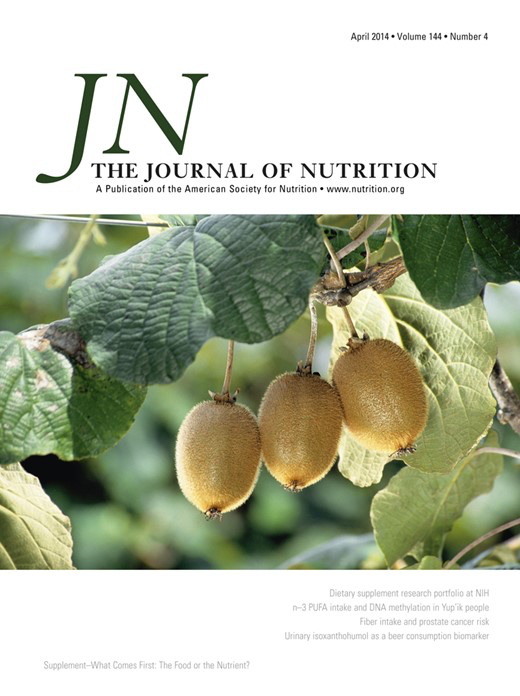
Is a Lower Dose of More Bioavailable Iron (18-mg Ferrous Bisglycinate) Noninferior to 60-mg Ferrous Sulfate in Increasing Ferritin Concentrations While Reducing Gut Inflammation and Enteropathogen Detection in Cambodian Women? A Randomized Controlled Noni
2023 Aug The Journal of Nutrition Fischer JAJ, Pei LX, Elango R, Hou K, Goldfarb DM, Karakochuk CD
Clinical Study Randomised Controlled Trial Iron DeficiencyA lower dose of iron amino acid chelate was not as effective as the standard iron salts dose in increasing ferritin levels in a predominantly iron-replete female Cambodian population.
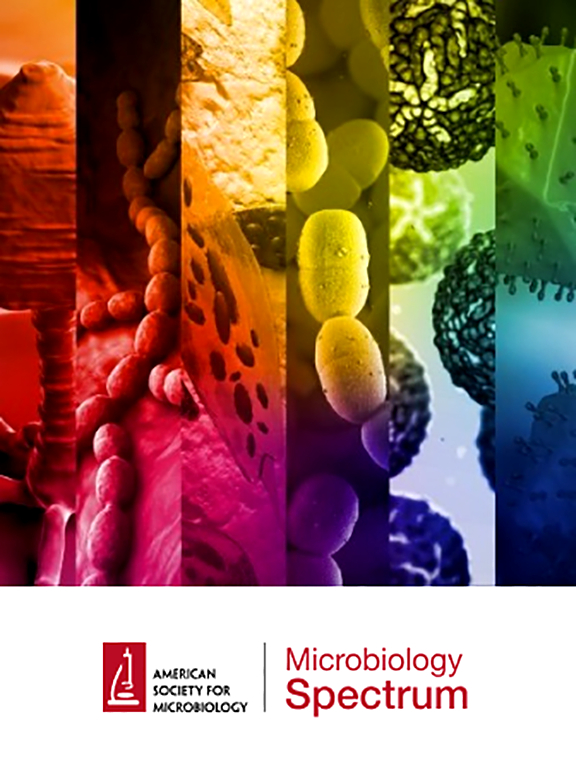
The Effect of Oral Iron Supplementation on Gut Microbial Composition: a Secondary Analysis of a Double-Blind, Randomized Controlled Trial among Cambodian Women of Reproductive Age
2023 Jun 15 Microbiology Spectrum Finlayson-Trick E, Nearing J, Fischer JAJ, Ma Y, Wang S, Krouen H, et al.
Randomised Controlled Trial Iron DeficiencyIron supplementation with ferrous bisglycinate in Cambodian women of reproductive age may increase the abundance of certain bacteria, including potential enteric pathogens.
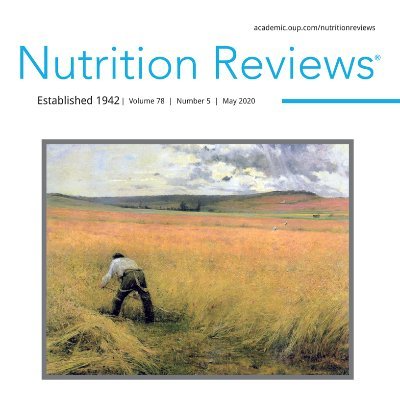
The effects of oral ferrous bisglycinate supplementation on hemoglobin and ferritin concentrations in adults and children: a systematic review and meta-analysis of randomized controlled trials
2023 Feb 02 Nutrition Reviews Fischer JAJ, Cherian AM, Bone JN, Karakochuk CD
Meta-Analysis Systematic Review Iron DeficiencyFerrous bisglycinate, an innovative amino acid iron chelate, showed increased absorption and fewer gastrointestinal side effects when used as an iron supplement in pregnant women.
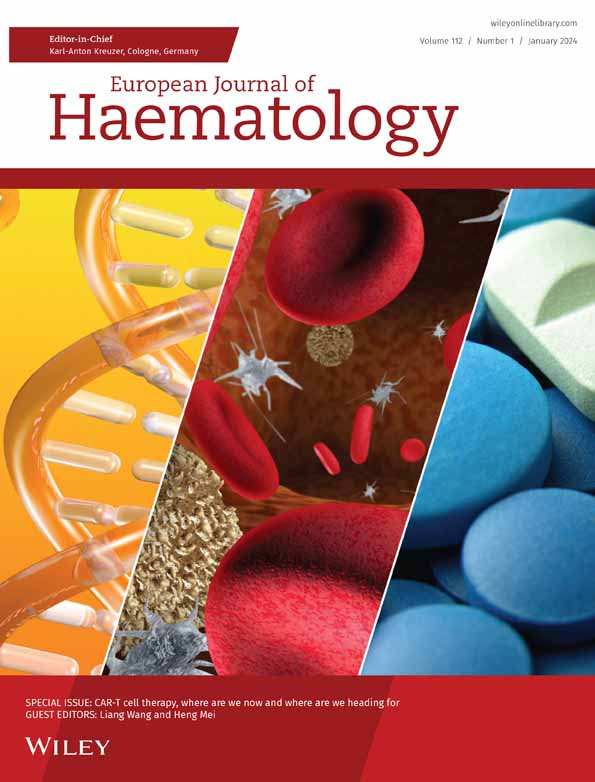
The role of oral iron in the treatment of adults with iron deficiency
2022 Nov 20 European Journal of Haematology Lo JO, Benson AE, Martens KL, Hedges MA, McMurry HS, DeLoughery T, et al.
Theoretical Article Review Article Iron DeficiencyThe hepcidin-ferroportin iron regulatory pathway prevents iron overload, creating an inherent limit on gastrointestinal iron absorption, and hence affects the efficacy of oral iron supplementation.
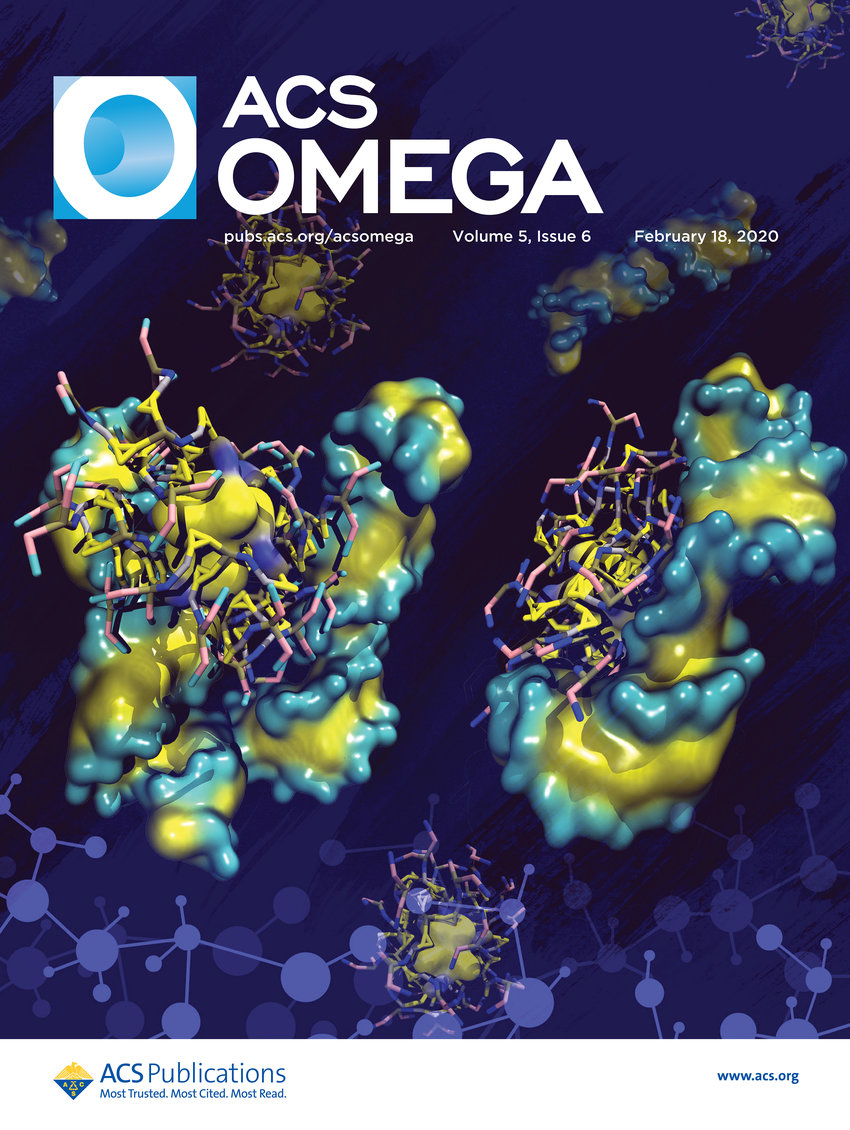
Iron Absorption: Factors, Limitations, and Improvement Methods
2022 Jun 10 ACS Omega Piskin E, Cianciosi D, Gulec S, Tomas M, Capanoglu E
In this context, the importance of studies to increase iron bioavailability is indisputable. Encapsulation, emulsification, chelation, and fortification play an important role in increasing the bioavailability and absorption rate of iron. Commercial iron supplements are available for humans suffering from IDA or wishing to get iron as a supplement. However, because of the free iron-dependent radical generation, some of the commercial iron supplements may produce adverse effects in the gut lumen and mucosal area of the intestine.
Review Article IronResearch insights are moderated by the Research Hub team and offer an at-a-glance overview of interesting research findings.

2023 The Journal of Nutrition
A lower dose of iron amino acid chelate was not as effective as the standard iron salts dose in increasing ferritin levels in a predominantly iron-replete female Cambodian population.
Clinical Study
Is a Lower Dose of More Bioavailable Iron (18-mg Ferrous Bisglycinate) Noninferior to 60-mg Ferrous Sulfate in Increasing Ferritin Concentrations While Reducing Gut Inflammation and Enteropathogen Detection in Cambodian Women? A Randomized Controlled Noni
Fischer JAJ, Pei LX, Elango R, Hou K, Goldfarb DM, Karakochuk CD

2023 Microbiology Spectrum
Iron supplementation with ferrous bisglycinate in Cambodian women of reproductive age may increase the abundance of certain bacteria, including potential enteric pathogens.
Randomised Controlled Trial
The Effect of Oral Iron Supplementation on Gut Microbial Composition: a Secondary Analysis of a Double-Blind, Randomized Controlled Trial among Cambodian Women of Reproductive Age
Finlayson-Trick E, Nearing J, Fischer JAJ, Ma Y, Wang S, Krouen H, et al.

2023 Nutrition Reviews
Ferrous bisglycinate, an innovative amino acid iron chelate, showed increased absorption and fewer gastrointestinal side effects when used as an iron supplement in pregnant women.
Meta-Analysis
The effects of oral ferrous bisglycinate supplementation on hemoglobin and ferritin concentrations in adults and children: a systematic review and meta-analysis of randomized controlled trials
Fischer JAJ, Cherian AM, Bone JN, Karakochuk CD

2022 European Journal of Haematology
The hepcidin-ferroportin iron regulatory pathway prevents iron overload, creating an inherent limit on gastrointestinal iron absorption, and hence affects the efficacy of oral iron supplementation.
Theoretical Article
The role of oral iron in the treatment of adults with iron deficiency
Lo JO, Benson AE, Martens KL, Hedges MA, McMurry HS, DeLoughery T, et al.
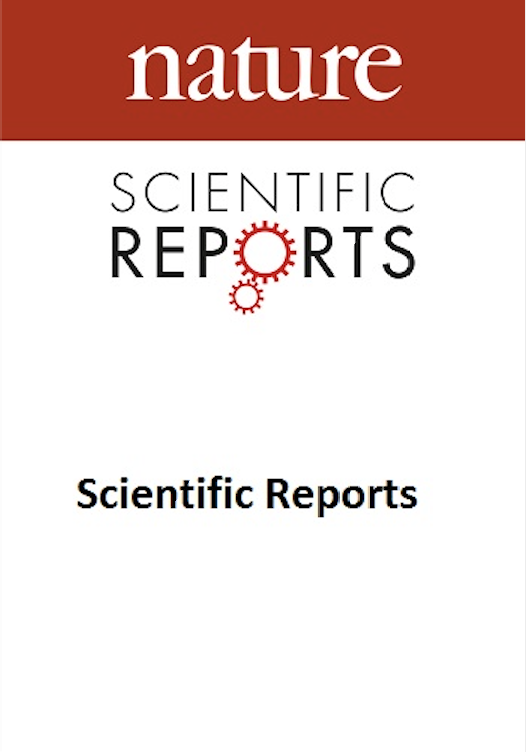
2022 Scientific Reports
Iron deficiency promotes a shift towards a more glycolytic metabolism, without detectable effect on mitochondrial bioenergetics, which can be corrected with iron supplements.
Experimental Study Skeletal Muscle
Abnormal whole-body energy metabolism in iron-deficient humans despite preserved skeletal muscle oxidative phosphorylation
Frise MC, Holdsworth DA, Johnson AW, Chung YJ, Curtis MK, Cox PJ, et al.
Review Articles
Review articles summarise and critically evaluate the current state of research on a specific topic or field by synthesising multiple primary research studies.

The effects of oral ferrous bisglycinate supplementation on hemoglobin and ferritin concentrations in adults and children: a systematic review and meta-analysis of randomized controlled trials
2023 Feb 02 Nutrition Reviews Fischer JAJ, Cherian AM, Bone JN, Karakochuk CD
Meta-Analysis Systematic Review Iron DeficiencyFerrous bisglycinate, an innovative amino acid iron chelate, showed increased absorption and fewer gastrointestinal side effects when used as an iron supplement in pregnant women.

The role of oral iron in the treatment of adults with iron deficiency
2022 Nov 20 European Journal of Haematology Lo JO, Benson AE, Martens KL, Hedges MA, McMurry HS, DeLoughery T, et al.
Theoretical Article Review Article Iron DeficiencyThe hepcidin-ferroportin iron regulatory pathway prevents iron overload, creating an inherent limit on gastrointestinal iron absorption, and hence affects the efficacy of oral iron supplementation.

Iron Absorption: Factors, Limitations, and Improvement Methods
2022 Jun 10 ACS Omega Piskin E, Cianciosi D, Gulec S, Tomas M, Capanoglu E
In this context, the importance of studies to increase iron bioavailability is indisputable. Encapsulation, emulsification, chelation, and fortification play an important role in increasing the bioavailability and absorption rate of iron. Commercial iron supplements are available for humans suffering from IDA or wishing to get iron as a supplement. However, because of the free iron-dependent radical generation, some of the commercial iron supplements may produce adverse effects in the gut lumen and mucosal area of the intestine.
Review Article Iron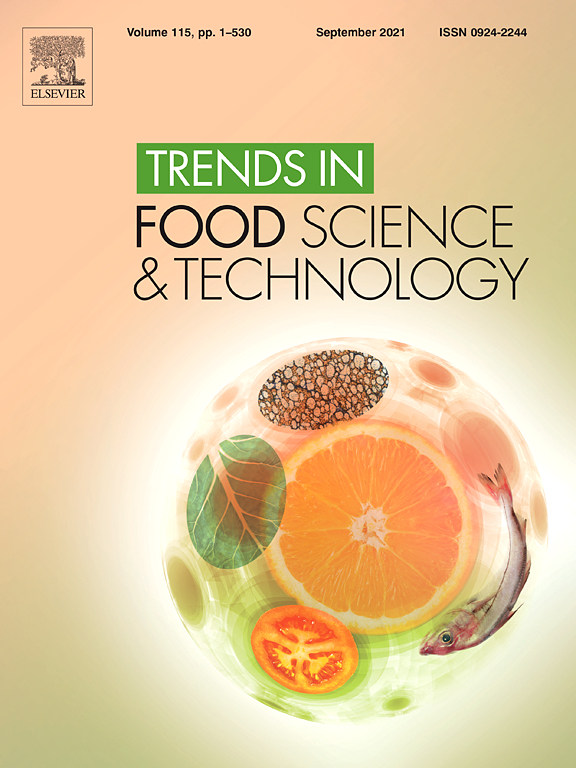
Prebiotics and iron bioavailability? Unveiling the hidden association - A review
2021 Apr Trends in Food Science & Technology Ahmad AMR, Ahmed W, Iqbal S, Javed M, Rashid S, Iahtisham-ul-Haq
Prebiotics show promise in improving iron absorption efficiency by influencing gut microbiota activity and luminal conditions, potentially offering a novel approach to combat IDA. Further research is necessary to solidify this connection and optimize strategies for enhancing iron bioavailability.
Review Article Prebiotic Iron Deficiency
Iron deficiency without anaemia: a diagnosis that matters
2021 Mar Clinical Medicine Al-Naseem A, Sallam A, Choudhury S, Thachil J
The review concludes that IDWA is poorly recognized by clinicians despite its high prevalence, emphasizes the importance of iron sufficiency during pregnancy, highlights the need for preoperative correction of IDWA to reduce transfusion and postoperative anaemia risk, and recommends oral iron as the first-line treatment, with intravenous supplementation in specific situations.
Review ArticleClinical Trials
Clinical trials are research studies that involve people and are conducted to evaluate the safety and efficacy of new treatments or interventions, such as drugs, medical devices, or behavioural therapies.

Is a Lower Dose of More Bioavailable Iron (18-mg Ferrous Bisglycinate) Noninferior to 60-mg Ferrous Sulfate in Increasing Ferritin Concentrations While Reducing Gut Inflammation and Enteropathogen Detection in Cambodian Women? A Randomized Controlled Noni
2023 Aug The Journal of Nutrition Fischer JAJ, Pei LX, Elango R, Hou K, Goldfarb DM, Karakochuk CD
Clinical Study Randomised Controlled Trial Iron DeficiencyA lower dose of iron amino acid chelate was not as effective as the standard iron salts dose in increasing ferritin levels in a predominantly iron-replete female Cambodian population.

The Effect of Oral Iron Supplementation on Gut Microbial Composition: a Secondary Analysis of a Double-Blind, Randomized Controlled Trial among Cambodian Women of Reproductive Age
2023 Jun 15 Microbiology Spectrum Finlayson-Trick E, Nearing J, Fischer JAJ, Ma Y, Wang S, Krouen H, et al.
Randomised Controlled Trial Iron DeficiencyIron supplementation with ferrous bisglycinate in Cambodian women of reproductive age may increase the abundance of certain bacteria, including potential enteric pathogens.
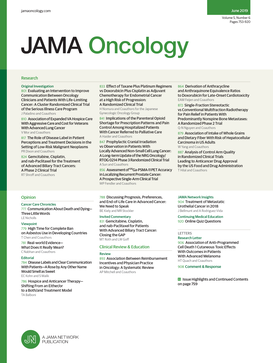
The Efficacy and Safety of Vitamin C for Iron Supplementation in Adult Patients With Iron Deficiency Anemia
2020 Nov 02 JAMA Oncology Li N, Zhao G, Wu W, Zhang M, Liu W, Chen Q, et al.
Among patients with IDA, oral iron supplements alone were equivalent to oral iron supplements plus vitamin C in improving hemoglobin recovery and iron absorption. These findings suggest that on-demand vitamin C supplements are not essential to take along with oral iron supplements for patients with IDA.
Randomised Controlled Trial Anaemia Iron Deficiency Anaemia Vitamin C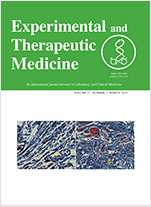
Effect of pomegranate juice consumption on biochemical parameters and complete blood count
2017 Jun 27 Experimental and Therapeutic Medicine Manthou E, Georgakouli K, Deli CK, Sotiropoulos A, Fatouros IG, Kouretas D, et al.
Randomised Controlled Trial Haemoglobin Red Blood Cell Count Iron Deficiency PomegranatePomegranate juice consumption over a short period promotes red blood cell production without significantly changing metabolic health and inflammation markers in healthy individuals.
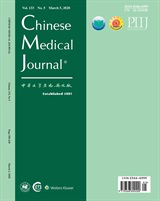
Acupuncture Improves Intestinal Absorption of Iron in Iron-deficient Obese Patients
2017 Mar 05 Chinese Medical Journal Xie XC, Cao YQ, Gao Q, Wang C, Li M, Wei SG
Randomised Controlled Trial Clinical Study Acupuncture Iron DeficiencyAcupuncture used for weight loss may increase the effectiveness of oral iron supplementation to treat obesity-related iron deficiency.
Study Protocols
Published study protocols are detailed plans that outline the objectives, methodology, statistical analyses, and organisation of a research study that have been made publicly available for others to review and use as a reference.
Presentation Slides

Clinical Study
A lower dose of iron amino acid chelate was not as effective as the standard iron salts dose in increasing ferritin levels in a predominantly iron-replete female Cambodian population.
Fischer JAJ, Pei LX, Elango R, Hou K, Goldfarb DM, Karakochuk CD

Randomised Controlled Trial
Iron supplementation with ferrous bisglycinate in Cambodian women of reproductive age may increase the abundance of certain bacteria, including potential enteric pathogens.
Finlayson-Trick E, Nearing J, Fischer JAJ, Ma Y, Wang S, Krouen H, Goldfarb DM, Karakochuk CD

Meta-Analysis
Ferrous bisglycinate, an innovative amino acid iron chelate, showed increased absorption and fewer gastrointestinal side effects when used as an iron supplement in pregnant women.
Fischer JAJ, Cherian AM, Bone JN, Karakochuk CD

Theoretical Article
The hepcidin-ferroportin iron regulatory pathway prevents iron overload, creating an inherent limit on gastrointestinal iron absorption, and hence affects the efficacy of oral iron supplementation.
Lo JO, Benson AE, Martens KL, Hedges MA, McMurry HS, DeLoughery T, Aslan JE, Shatzel JJ

Experimental Study
Iron deficiency promotes a shift towards a more glycolytic metabolism, without detectable effect on mitochondrial bioenergetics, which can be corrected with iron supplements.
Frise MC, Holdsworth DA, Johnson AW, Chung YJ, Curtis MK, Cox PJ, Clarke K, Tyler DJ, Roberts DJ, Ratcliffe PJ, Dorrington KL, Robbins PA

Cohort Study
The body begins to upregulate iron absorption at a ferritin concentration of less than 50 µg/L, indicating an incipient iron deficiency in young women.
Galetti V, Stoffel NU, Sieber C, Zeder C, Moretti D, Zimmermann MB
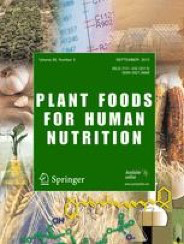
Experimental Study
Pomegranate juice has potential beyond ascorbic acid alone in enhancing iron absorption and assimilation, supporting Ayurveda's proposition of managing iron deficiency anemia with pomegranate.
Balasubramani SP, Varghese RK, Vishnuprasad CN, Venkatasubramanian P

Meta-Analysis
Children with attention-deficit hyperactivity disorder are found to have lower ferritin levels and are more likely to have iron deficiency.
Tseng PT, Cheng YS, Yen CF, Chen YW, Stubbs B, Whiteley P, Carvalho AF, Li DJ, Chen TY, Yang WC, Tang CH, Chu CS, Yang WC, Liang HY, Wu CK, Lin PY

Randomised Controlled Trial
Pomegranate juice consumption over a short period promotes red blood cell production without significantly changing metabolic health and inflammation markers in healthy individuals.
Manthou E, Georgakouli K, Deli CK, Sotiropoulos A, Fatouros IG, Kouretas D, Haroutounian S, Matthaiou C, Koutedakis Y, Jamurtas AZ

Randomised Controlled Trial
Acupuncture used for weight loss may increase the effectiveness of oral iron supplementation to treat obesity-related iron deficiency.
Xie XC, Cao YQ, Gao Q, Wang C, Li M, Wei SG

Experimental Study
Iron supplements intake acutely elevates hepcidin levels, decreasing the subsequent iron absorption with lower dosages and alternate day supplementation maximizing absorption.
Moretti D, Goede JS, Zeder C, Jiskra M, Chatzinakou V, Tjalsma H, Melse-Boonstra A, Brittenham G, Swinkels DW, Zimmermann MB

Review Article
Consuming a diverse mix of dietary measures enhances iron absorption more effectively than focusing on single nutrients or foods, especially in young women.
Beck K, Conlon C, Kruger R, Coad J
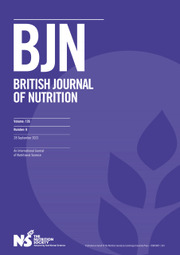
Experimental Study
Black soyabean seed coat extract significantly decreases hepcidin expression, leading to improved iron metabolism and potential treatment for iron-deficiency anaemia.
Mu M, Wu A, An P, Du X, Wu Q, Shen X, Wang F
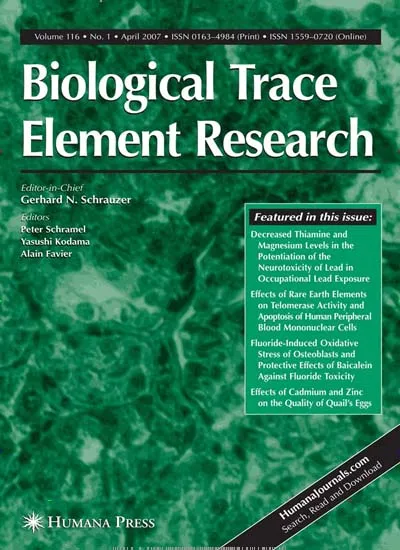
Experimental Study
Heme iron and non-heme iron, presented as ferrous sulfate, do not compete for absorption when ingested on an empty stomach.
Gaitán D, Olivares M, Lönnerdal B, Brito A, Pizarro F

Experimental Study
Bovine meats exhibit low variations in total iron content, with more than 60% of it consisting of heme iron.
Valenzuela C, López de Romaña D, Olivares M, Morales MS, Pizarro F
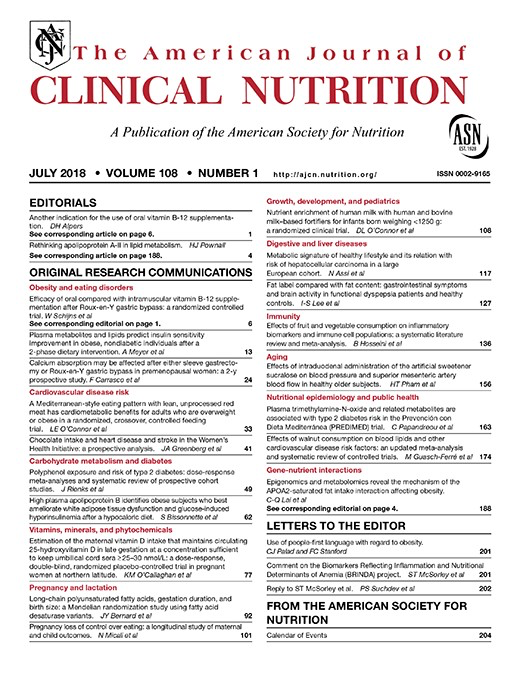
Randomised Controlled Trial
Healthy individuals, including those with low iron stores, show reduced nonheme-iron absorption after iron supplementation, leading to larger iron stores that are sustained over time.
Roughead ZK, Hunt JR
Executive Summary
Write an executive summary in the form of a blog article on the topic of "Research into Chinese medicine treatment for Iron Deficiency" summarising the research below and using language that can be easily understood by patients and avoiding medical jargon using a professional and caring tone of voice.
Write an executive summary in the form of a blog article on the topic of "Researched Chinese medicine treatments for Iron Deficiency" summarising the research below in an objective and easy to understand way, and using language that can be easily understood by patients. Group the article into Chinese medicine treatments first, followed by nutrition and other treatments. Avoid using medical jargon and use a professional and caring tone of voice.
Write me a concise but easy to understand executive summary on the topic of "Chinese medicine treatments for Iron Deficiency" based on the following research that I will give you. Your summary should be 2 paragraphs long in Australian English spelling and include references to the studies.
A Clinical Study published in 2023 in the journal The Journal of Nutrition found that A lower dose of iron amino acid chelate was not as effective as the standard iron salts dose in increasing ferritin levels in a predominantly iron-replete female Cambodian population. The research used a double-blind, randomized placebo-controlled noninferiority trial conducted in Cambodia. Participating nonpregnant women, aged 18-45, were randomly assigned either 60mg ferrous sulfate, 18mg ferrous bisglycinate or a placebo for 12 weeks. Baseline and 12-week post blood and fecal samples were collected from the participants and used to measure ferritin and fecal calprotectin levels as well as to detect the presence of enteropathogens. The study found that mean ferritin concentration was higher at 12 weeks in those receiving ferrous sulfate dose compared to those receiving a lower dose of ferrous bisglycinate and a placebo. No significant changes were observed across the groups in terms of fecal calprotectin concentrations or detection of enteropathogens. Therefore, it was concluded that the 18mg dose of ferrous bisglycinate was not as effective as the 60mg ferrous sulfate dose in increasing ferritin concentrations.
A Randomised Controlled Trial published in 2023 in the journal Microbiology Spectrum found that Iron supplementation with ferrous bisglycinate in Cambodian women of reproductive age may increase the abundance of certain bacteria, including potential enteric pathogens. The study involved a secondary analysis of a double-blinded, randomized controlled trial examining the impact of two different oral iron supplements, ferrous sulfate and ferrous bisglycinate, or placebo on the gut microbiomes in Cambodian women of reproductive age (WRA) over a period of 12 weeks. Stool samples were provided by the participants at the beginning and end of the study for gut microbial analysis. This analysis consisted of 16S rRNA gene sequencing and targeted real-time PCR. In terms of results, it was found that iron supplementation did not significantly change the overall diversity of the gut microbiome in these predominantly iron-replete Cambodian WRA. However, ferrous bisglycinate did lead to an increase in the relative abundance of and showed a trend of an increase for another strain of bacteria, Escherichia. Furthermore, the presence of a virulence gene associated with enteropathogenic Escherichia coli was detected in a greater quantity in the stool samples of those who took ferrous sulfate. This suggests that while the overall biodiversity of the gut microbiome remained stable, certain potential pathogen-associated bacterial populations may have increased due to the iron supplementation.
A Meta-Analysis published in 2023 in the journal Nutrition Reviews found that Ferrous bisglycinate, an innovative amino acid iron chelate, showed increased absorption and fewer gastrointestinal side effects when used as an iron supplement in pregnant women. Methodology: The team carried out a systematic review and meta-analysis of randomized controlled trials (RCTs) through a comprehensive survey of electronic databases and grey literature up to July 17, 2020, to ascertain the impacts of ferrous bisglycinate versus other iron supplements on hemoglobin and ferritin levels and gastrointestinal (GI) adverse events. Exercises were undertaken to calculate averages from these trials which involved pregnant women and children and these average estimates were communicated as standardized mean differences. The rate of occurrence for GI adverse events was determined using Poisson generalized linear mixed-effects models. Studies involving other subjects (men and non-pregnant women) were evaluated on an individual basis. Discussion of Results: The results reveal fermentable bisglycinate demonstrating an advantage over other iron supplements. Among the pregnant women involved in the trials, those using this supplement had higher hemoglobin levels after 4-20 weeks of administration. Additionally, these women reported reduced GI adverse events. Although the observed increase in ferritin levels was not marked as significant, it depicted an upward trend. However, no notable differences were detected in either hemoglobin or ferritin concentrations in children using ferrous bisglycinate.
A Theoretical Article published in 2022 in the journal European Journal of Haematology found that The hepcidin-ferroportin iron regulatory pathway prevents iron overload, creating an inherent limit on gastrointestinal iron absorption, and hence affects the efficacy of oral iron supplementation. The methodology adopted in this study involved investigating the pathophysiology of iron absorption alongside reviewing existing evidence relating to different preparations of oral iron. Different dosing protocols were compared, including daily low dose and every other day protocols, in an attempt to bypass the limitations imposed by the body's own regulatory systems and maximize absorption while minimizing side effects. The formulation, dosing strategy, and patient selection for oral vs. intravenous iron supplementation were also studied. The results demonstrated that the body's inherent iron regulation pathway, named the hepcidin-ferroportin pathway, has evolved to prevent iron overload, which subsequently places an inherent limit on gastrointestinal iron uptake; this has significant implications for the efficacy of oral iron supplementation. Furthermore, excess unabsorbed iron proved to be responsible for various side effects often associated with oral iron supplementation, such as dyspepsia and constipation. This underlines the challenges posed by the body's own iron management system when dealing with iron deficiency through oral iron supplements.
A Experimental Study published in 2022 in the journal Scientific Reports found that Iron deficiency promotes a shift towards a more glycolytic metabolism, without detectable effect on mitochondrial bioenergetics, which can be corrected with iron supplements. The methodology of this prospective, case-control, clinical physiology study involved two series of testing. Thirteen iron-deficient individuals and thirteen iron-replete control participants were chosen for the study, and they underwent P-magnetic resonance spectroscopy of their exercising calf muscles to investigate the differences in oxidative phosphorylation. This testing was followed by a whole-body cardiopulmonary exercise test. After these assessments, individuals were given an intravenous infusion, which was randomised to be either iron or saline. The results showed no significant influence of either baseline iron levels or the intravenous iron infusion on the high-energy phosphate metabolism. In the case of submaximal cardiopulmonary exercise, the rate of decline in blood lactate concentration was slower for the iron deficient group, which shows signs of abnormal energy metabolism on a whole-body level. Remarkably, this anomaly was corrected after an intravenous iron infusion. Furthermore, the intravenous iron also increased the lactate threshold during maximal cardiopulmonary exercise by around 10%, no matter what the baseline iron status of the individual was.
A Cohort Study published in 2021 in the journal EClinicalMedicine found that The body begins to upregulate iron absorption at a ferritin concentration of less than 50 µg/L, indicating an incipient iron deficiency in young women. In the methodology, this study utilizes a pooled analysis of stable iron isotope studies conducted between 2006 and 2019 on healthy women aged 18 to 50. These studies quantified iron absorption from meals providing physiological quantities of iron. A mathematical model known as generalized additive modeling was employed to ascertain the relationships between iron absorption, ferritin, and a molecule called hepcidin. By estimating the first derivatives of the trend created by the model, inflection points (or thresholds) in these relationships were established. The results revealed that hepcidin increased in a linear fashion parallel to ferritin. Iron absorption increased when hepcidin reached a threshold value and when a threshold ferritin value was detected, beyond which iron absorption remained stable. An auxiliary validation within the results found that a hepcidin of approximately 3 nmol/l corresponded to a ferritin level of approximately 51 µg/l. These findings collectively suggest that if the body's ferritin concentration falls below 50 µg/L—corresponding to a hepcidin level of less than 3 nmol/l—the body will respond by absorbing more iron from the diet, signaling an emerging iron deficiency.
A Experimental Study published in 2020 in the journal Plant Foods for Human Nutrition found that Pomegranate juice has potential beyond ascorbic acid alone in enhancing iron absorption and assimilation, supporting Ayurveda's proposition of managing iron deficiency anemia with pomegranate. The study applied a cell-free model imitating gastric and intestinal digestive procedures, along with cell-based models (in the form of Caco-2 and HepG2 cells), to evaluate iron dialysability in the presence of pomegranate juice. This method was utilized to observe iron uptake into cells, assessed via cellular ferritin content measures. Pomegranate juice highly improved iron dialysability in the cell-free model and increased iron uptake and ferritin content in the cells’ models far more than ascorbic acid alone. This result corroborates Ayurveda's claim regarding the beneficial usage of pomegranate in managing iron deficiency anemia, proposing a straightforward remedy to a global health issue. The betterment of iron bioavailability could be due to the synergistic action of various phytochemicals in pomegranate juice, suggesting a multifunctional utility for this natural product.
A Meta-Analysis published in 2018 in the journal Scientific Reports found that Children with attention-deficit hyperactivity disorder are found to have lower ferritin levels and are more likely to have iron deficiency. For the methodology of this meta-analysis, numerous databases such as PubMed, ScienceDirect, Cochrane CENTRAL, and ClinicalTrials.gov were searched for relevant studies up until August 9, 2017. The principal outcomes were the differences in peripheral iron levels between children diagnosed with ADHD and healthy controls, and the severity of ADHD symptoms in children with and without iron deficiency. Seventeen articles met the strict inclusion criteria and were therefore included in the meta-analysis. Discussing the results, peripheral serum ferritin levels (a measure of iron storage) were found to be significantly lower in children with ADHD. However, no notable difference was found in serum iron or transferrin levels (measures of iron transport). In addition, children with iron deficiency displayed more severe ADHD symptoms. Importantly, a significant link between ADHD and iron deficiency was also established.
A Randomised Controlled Trial published in 2017 in the journal Experimental and Therapeutic Medicine found that Pomegranate juice consumption over a short period promotes red blood cell production without significantly changing metabolic health and inflammation markers in healthy individuals. In the methodology of this study, ten healthy subjects (five males and five females averaging 31.8 years of age and weighing an average of 66.2 kg) were split into two groups. One group drank 500 ml of pomegranate juice every day for 14 days, while the other did not. Blood samples were taken from the subjects before and after the experimental period to measure various health markers. In the discussion of results, it was observed that pomegranate juice intake led to a substantial rise in red blood cell count, hemoglobin levels, and hematocrit levels. However, other complete blood count parameters, and levels of glucose, cholesterol, triglycerides, high-density lipoprotein, low-density lipoprotein, and C-reactive protein remained largely unaffected after the juice consumption. This suggests that pomegranate juice only had a substantial effect on increasing erythropoiesis or decreasing degradation in healthy individuals.
A Randomised Controlled Trial published in 2017 in the journal Chinese Medical Journal found that Acupuncture used for weight loss may increase the effectiveness of oral iron supplementation to treat obesity-related iron deficiency. The study was conducted on sixty iron deficient or iron deficient anemia patients who were also obese, in the Beijing Hospital of Traditional Chinese Medicine. They were divided into two groups: one group received an oral iron supplement combined with acupuncture treatment for weight loss (acupuncture group), and the other group received the oral iron supplement along with a placebo acupuncture treatment (control group). Over the course of eight weeks, anthropometric parameters were measured, and blood samples were tested before and after the treatment. The acupuncture group showed a significant decrease in body weight, body mass index, waist circumference, and waist/hip circumference ratio, while the control group showed no significant changes. The oral iron supplement seemed to bring more noticeable improvements in the iron status indicators in the acupuncture group than in the control group. In addition, the serum leptin and hepcidin concentrations, which impact iron absorption, declined significantly in the acupuncture group and were relatively stagnant in the control group. These results suggest that acupuncture-based weight loss treatment could boost intestinal iron absorption, likely through downregulation of systemic leptin-hepcidin levels.
A Experimental Study published in 2015 in the journal Blood found that Iron supplements intake acutely elevates hepcidin levels, decreasing the subsequent iron absorption with lower dosages and alternate day supplementation maximizing absorption. In the methodology, a total of 54 nonanemic young women having plasma ferritin ≤20 µg/L were selected. There were two studies: the first study had 25 participants who were given varying doses of iron ranging from 40mg to 240mg at 8:00 am while fasting for one or two consecutive days. In the second study, 16 participants were given similar iron doses. A third study involving 13 participants entailed ingestion of three 60mg Fe doses within a span of 24 hours. In the results discussion, it was found that doses above 60mg led to a rise in serum hepcidin levels after 24 hours, causing a decline in fractional iron absorption by 35% to 45%. As the dosage increased, absorption fraction decreased but absolute absorption increased. For instance, a sixfold increase in iron dose resulted only in a threefold increase in amount of iron absorbed. Furthermore, the total iron absorbed from three doses was not considerably greater than from two morning doses.
A Review Article published in 2014 in the journal Nutrients found that Consuming a diverse mix of dietary measures enhances iron absorption more effectively than focusing on single nutrients or foods, especially in young women. This review examined dietary factors that contribute to iron deficiency in young women residing in industrialized countries. The study analysed dietary elements such as ascorbic acid and animal protein foods - meat, fish, and poultry - that enhance iron absorption. Conversely, it also explored elements like phytic acid, soy protein, calcium, and polyphenols, which inhibit this process. Furthermore, the research also delved into the complex interactions between these dietary factors, whose consumption effects may cancel each other out. The study made use of cross-sectional studies to deduce the relationship between diet and iron status. Through these studies, it was discovered that only meat intake consistently resulted in higher serum ferritin concentrations, indicating increased iron stores. In recent studies, the combination and timing of foods consumed were considered, yielding rather mixed results. The results indicate that while some diet elements such as ascorbic acid and meat enhance iron absorption, their impact may be nullified when consumed alongside inhibitory foods and nutrients. Across different studies, meat intake consistently improved iron status, hinting at its potential role in mitigating iron deficiency. However, the most striking finding is that using a broad selection of dietary measures, rather than focusing on individual nutrients or foods, presents a more effective approach. This suggests dietary diversification could be crucial for preventing and treating iron deficiency, particularly in young women in industrialized countries.
A Experimental Study published in 2014 in the journal British Journal of Nutrition found that Black soyabean seed coat extract significantly decreases hepcidin expression, leading to improved iron metabolism and potential treatment for iron-deficiency anaemia. The research employed both in vitro and in vivo experimental designs using cells treated with black soyabean seed coat extract (BSSCE) and 8-week-old male mice fed with a diet containing 2% BSSCE respectively. The study measured the effect of this extract on the expression of hepcidin, which is known to regulate iron homeostasis. In addition to this, its impact on splenic iron concentrations, serum iron concentrations and the phosphorylation levels of specific proteins was assessed. The study found that BSSCE effectively inhibited the expression of hepcidin in both the in vitro and in vivo investigations. The mice given a diet containing BSSCE showed a decrease in hepatic hepcidin expression and splenic iron concentrations, while at the same time, an increase was observed in serum iron concentrations. The BSSCE induced this change through a decrease in the phosphorylation of mothers against decapentaplegic homolog proteins. There were marked increases in erythrocyte counts, hemoglobin concentrations, and hematocrit values in the test mice, indicating improved iron metabolism. This suggest that black soyabean extract has potential in regulating iron metabolism, presenting possibilities for the treatment of hepcidin-related diseases, including iron-deficiency anaemia.
A Experimental Study published in 2012 in the journal Biological Trace Element Research found that Heme iron and non-heme iron, presented as ferrous sulfate, do not compete for absorption when ingested on an empty stomach. The study involved twenty-six healthy, nonpregnant women who participated in two iron absorption research studies which utilised iron radioactive tracers. The process began by obtaining the dose-response curve for absorption of heme iron in different doses, arrayed as concentrated red blood cells. Subsequently, the absorption of these same doses were evaluated, but this time with the addition of non-heme iron in the form of ferrous sulfate, with a consistent heme/non-heme iron molar ratio of 1:1. Iron sources were administered on an empty stomach. In analyzing the results, it was found that heme iron absorption was reduced simply by increasing total heme iron. Interestingly though, the addition of non-heme iron as ferrous sulfate exhibited no observable effect on the absorption of heme iron. This observation led to the conclusion that heme and non-heme iron, when presented as ferrous sulfate, do not compete for absorption. However, the underlying mechanism steering the absorption of these iron sources remains unclear.
A Experimental Study published in 2009 in the journal Biological Trace Element Research found that Bovine meats exhibit low variations in total iron content, with more than 60% of it consisting of heme iron. Two 4-month-year-old calves were injected with radioactive iron (55Fe), and then, samples were taken from the principal cuts of meat and major organs. The collected samples underwent acid digestion and their iron content was observed using atomic absorption spectrophotometry. In an overlapping process, another set of duplicate samples were analyzed for the concentration of 55Fe via a double isotopic method. In the discussion of results, it was observed that the all cuts of meat had a consistent level of total iron (TFe). The amount of heme iron (HeFe) was found to represent more than 60% of TFe in meat, and varying larger proportions in different organs. The spleen held the highest HeFe proportion, whilst the liver contained the lowest. There was a notable amount of the radioisotope found in the blood, with minimal amounts found in muscle and organs.
A Randomised Controlled Trial published in 2000 in the journal The American Journal of Clinical Nutrition found that Healthy individuals, including those with low iron stores, show reduced nonheme-iron absorption after iron supplementation, leading to larger iron stores that are sustained over time. This research was conducted via a randomized, placebo-controlled trial with 57 healthy volunteers (comprising of men and women). The participants' absorption of heme and nonheme iron was measured both prior and subsequent to a 12-week course of iron supplementation achieved through the provision of 50mg iron everyday as ferrous sulphate. Alongside, serum and fecal ferritin were observed during the supplementation period and for six months thereafter. In the initial phase, both heme and nonheme iron absorption had an inverse relation with serum ferritin concentration. With the passage of the 12 week period of iron supplementation, participants, even those with serum ferritin less than 21 microg/L, showed evidence of absorbing less nonheme iron from their diet, but no such change was observed with respect to heme iron from a beef-based meal. Serum ferritin concentration was higher after the supplementation period than after placebo, and this increase remained for more than half a year, barring individuals with low iron stores, in whom the serum ferritin levels returned to their initial numbers within three months. A 2.5-fold increase in fecal ferritin excretion was noted during the supplementation. It becomes evident from these findings that even people with low iron stores adapt by lowering their nonheme iron absorption from food in response to iron supplementation. Despite this adaptation, iron stores appeared to be greater after iron supplementation when compared to placebo, and the difference was sustained across the board, except in the case of people with the lowest iron stores.
Moderation Tools
Topic
Sign In
Users not signed in are limited to viewing the 5 most recent items of content.